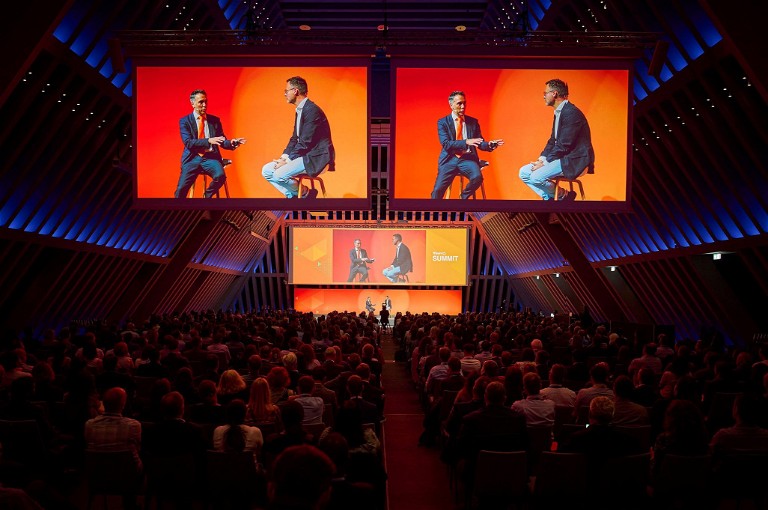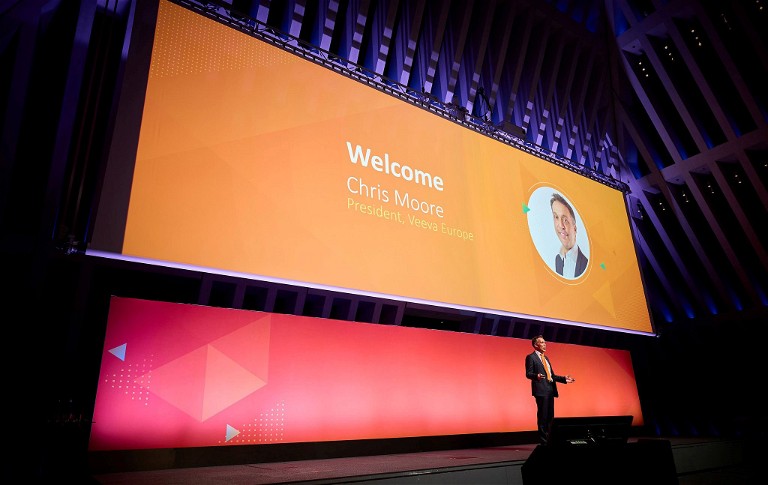Veeva R&D and Quality Summit 2022
Veeva la Vida: A Roundup of the R&D and Quality Summit 2022
Pharmafocus journalists Ana Ovey and Lina Adams made their way to Zurich for Veeva’s annual R&D and Quality Summit 2022. Here, they describe and unveil their reflections upon the event and what was learned

Timeline
On the 8 June, we had the pleasure of joining Veeva at their 2022 Life Sciences Summit in Zurich, Switzerland. We had the chance to speak with some prominent figures in R&D, such as Steve Guise, CIO of Roche, and Paul Attridge, Director of Regulatory Affairs at Veeva, and heard about the latest developments in digital innovation, as well as the impact that these may have on research methods.
We arrived in the late afternoon on Tuesday, and made our way to a roundtable meeting with Tim Davis, Vice President of Strategy, MyVeeva for Patients at Veeva Systems, and Jim Reilly, VP, Development Cloud Strategy, who spoke on the future of digital clinical trials. Both shared insights into how technology can enable ease of data collection, and how this can enhance patient centricity. We learnt that although COVID-19 undoubtedly pushed innovation in clinical trials, there is still a great deal more work to simplify the process of R&D through increased adoption of technology, particularly in the form of an end-to-end development cloud.
The next morning, we attended the opening keynote to the Summit and were introduced to the event by Chris Moore, President of Veeva. We then attended a zone keynote by GSK, titled ‘The path to regulatory transformation’, in which Paul Attridge expressed the importance of digitalising regulatory affairs to accelerate the often-longwinded process. One of us attended another, titled ‘GSK: Scaling the vault clinical platform to accelerate R&D’, while the other attended a talk from Jorge Carmona Toscano, Cross Veeva Strategy Lead, ‘Laying the foundations for Clinical Trials in the digital world’.
At midday, we had the opportunity to partake in a roundtable discussion with Steve Guise, who shared how internal efficiency gains can be brought out by digital transformation.
“ The expansion of digital clinical trials is increasingly more relevant, in the midst of the ongoing conflict in Ukraine ”
Reflections on data management by Lina Adams
One of the key takeaways from our time at Veeva Summit was that new data management software is pivotal in reducing the administrative burden across clinical trials. Tim Davis and Jim Reilly highlighted that today’s tools are not enough to collect patient data – the research process is slowed down because the data are all passed to a research site. In last month’s issue of Pharmafocus, I wrote a feature on the importance of virtual data management, in which I highlighted that electronic data capture (EDC) currently accounts for only 20-40% of all clinical data collected, and this requires an innovative data management team to ensure transparency, integrity, and quality of data.
If everyone involved in clinical trials can use a common hub, this can help trials to run more efficiently. If there is one platform available for telehealth, symptoms, e-consent, and a patient diary, this makes for a simpler and more organised system. Phase III clinical trials typically take between 24-36 months to complete; if this can be fast-tracked, then products can be shipped off to regulatory boards quicker, meaning that patients can receive them faster. Routine visits can be made virtual, and patients are encouraged to report symptoms as frequently as they can. Veeva is hoping to cut this process down to 5-6 months.
The expansion of digital clinical trials is increasingly more relevant, in the midst of the ongoing conflict in Ukraine. Veeva is offering solutions virtually to ensure that the people of Ukraine are still receiving help.
Steve Guise also emphasised that “the infrastructure for data management was not in place before the pandemic”. COVID-19 forced pharma to seek out ways of providing adequate care online, and even two years after the beginning of the outbreak, retraining and reskilling IT staff is vital in an everchanging environment. Companies like Veeva have been creating a shared platform to encourage shared solutions in data management. It is also important to bring in expertise from other industries as well. However, at a time of high inflation, companies need to allocate resources carefully, as competition for funding escalates.
Richard Young, VP, Strategy, Vault CDMS, also shared some benefits of digital clinical trials that we were not previously aware of. Prior to speaking to Richard, we were under the impression that there were significant security concerns associated with electronic data collection (EDC), which may have deterred patients from participating in virtual trials. However, Richard reassured us that since EDC is anonymised, without names or any identifiers, patient data are safe and secure. They even get assigned a unique number.
Even in regulatory affairs, digitalising data management will keep patient centricity at the top of the list, as their experience needs to be optimised. Paul Attridge put it simply, “We need to improve the transfer of information.” As it stands, regulatory operations are difficult to govern, and there are better ways to improve processes and data management. In addition, the process is only going to become more disconnected as agencies place greater demands on clinical trial runners to supply them with the information, and there is a lack of clarity as to how they will manage and interpret that data. Automation is, therefore, more important than ever in reducing the workload of workers in regulatory organisations, and streamlines the publishing process.
Paul Attridge also stressed the need to “harmonise, optimise, and simplify”, stating that traceability and data functionality should be combined into a single platform. Veeva is not the only company who are exploring this, and as we discussed in last month’s feature on the benefits of technology in data collection: platforms such as Florence eConsent also aid with participant management, allowing leaders of clinical trials to monitor the status of participants’ informed consent in real time. The system can also enable remote participant identity verification, update to the latest consent versions for new protocol amendments, and distribute and track reconsenting in the same application.
Digital trials still have some notable drawbacks. For example, a patient may be asked to perform tests multiple times a day and check their vital signs themselves. This depends on getting the right kits to the right patients at the right time. Trial service providers can work with experienced providers to accelerate timelines and help deal with logistical challenges, as at-home testing requires careful logistics management, particularly for large-scale studies.
Nevertheless, virtual trials offer a more streamlined approach than traditional trials, saving valuable time by removing the necessity for in-person visits to sites, and therefore easing the burden on HCPs and improving the patient experience.

Chris Moore, President of Veeva Europe
“ There is pressure for both patient and physician to become f luent in all of these, and multiple technologies means more training for those working in healthcare ”
Patient centricit y with Ana Ovey
Ensuring a better and more meaningful patient engagement, which will result in better patient outcomes and standard of care, begins in developing a new concept of a clinical trial. This was the position of Tim Davis, Vice President of Strategy at Veeva, and Jim Riley, who on Tuesday afternoon highlighted that a streamlined interface, and end-to-end development cloud, can improve pharmacovigilance, patient engagement, efficiency, and patient outcomes. The aspect of streamlining the technology involved in trials and data collection is vital, they explained, as multiple technologies cause inefficiencies at multiple stages of the trials, and translations across multiple formats.
Currently, across the board in healthcare, technologies are not integrated, with patients having to navigate multiple apps, interfaces, and platforms. There is pressure for both patient and physician to become fluent in all of these, and multiple technologies means more training for those working in healthcare. It also means translating data across different systems and platforms – all of which creates lags in giving the best possible care to the people who need it.
In our interview with them, Davis and Riley outlined that in spite of calls to do so, attempting an increased model of decentralised trial would therefore be inefficient, if we were to attempt to accomplish it through today’s tooling. This was highlighted by the pandemic’s impact on R&D, which necessitated a greater focus on decentralised clinical trials, and for a time required changes beyond the capacity of what digital platforms available were able to handle. The lack of streamlined technology ready for a decentralised model meant lags in both COVID-19 trials, and in non-COVID trials.
David and Riley shared that streamlined technology would reduce the amount of time it took to bring effective medicines to patients. Further, in the face of another pandemic, an endto-end development cloud could ensure an even faster response and delivery of innovative medicines. In fact, it was put forward that using such end-to-end technology to streamline R&D could shave 2-6 months off Phase III trials – areduction of as much as 25%.
There are drawbacks, however, such as the question of data security and ensuring strong patient engagement in remote healthcare. Patient trust is also complicated by the introduction of potential cybersecurity concerns.
However, more positive implications exist for the long-term R&D into new treatments and management of rare diseases, extending into easier genotyping and sample management. Further, the introduction of this technology allows the delivery of healthcare to conflict areas, such as cloud technology for patients in Ukraine.
We went on to interview keynote speaker, Steve Guise, CIO of Roche, who elaborated further on these themes. Describing “the digital augmentation” of medicines, Guise shared: “When we launch a medicine, often we’ll have a companion diagnostics tool for testing, but increasingly, we’ll also have a digital tool that will help patients monitor their disease, track outcomes, and interface with a physician, potentially. We ask, by disease area, what are the kind of functionalities that we want to bring to patients? Then there’s a new arm to the business developing, which is in the space of insights. It’s a small entity at the moment, which contains data and clinical decision support capabilities, and that’s something that we will grow in the coming years.”
Guise also underlined that the use of such technology could reallocate resources into drug discovery, with significant implications for current global issues, such as antimicrobial resistance, rare disease treatments, and future implications for the tackling of future pandemics and emerging infectious diseases. The system can also be used to share best practices, reduce time, and reduce cost.
However, a few drawbacks exist, including the fact that a shift to cloud-based technology in healthcare would require potentially significant reskilling, and this training may also take time. Guise elaborated on other barriers to the process:
“The main barrier is to differentiate between digitisation and digitalisation. Digitisation I would describe as taking an analogue process and simply automating it with tools and technology. Digitalisation is fundamentally rethinking how we work, without the legacy mindset of how we worked in the analogue past. I’d say that’s quite difficult for people who’ve been in the industry for their whole careers, reimagining how to do things from the ground up.”
Guise pressed the importance of “reimagining those ways of working,” and “challenging the status quo” when it comes to the use of tech in health R&D. The seismic shift represented by digitalisation certainly presents a challenge, as any complete restructuring would. But the pandemic revealed the disconnected nature of health data, which slowed the delivery of vital medicines, and the discovery of vaccinations to protect the globe against a new threat. Across the world, researchers and healthcare professionals, as well as members of the public, grappled for data that was streamlined. This included insights into infection rates, deaths, recovery rates, transmission, and more.
Other areas of need for a more remote and streamlined healthcare are consistently emerging, too. As highlighted by Davis and Riley in our earlier interview, the use of cloud technology in conflict areas could deliver significant results in areas of high patient need, including Ukraine and Russia:
“We’ve worked very hard from an IT perspective to ensure that all of the systems that we make available in Ukraine and in Russia are still fully functioning and available, and they are. We run a lot of clinical trials in Ukraine, for example, that’s been difficult to maintain because shipping clinical supply into the country is hindered. And of course, people are not as engaged in being part of a clinical trial as they would have been. We’re trying to maintain that we continue to ship medicinal products to patients in both countries, but it’s challenging. We do all that we can, and we do a lot for our employees as well. We have a big presence in Poland, and the Polish team have done a lot to help their neighbours.”
Post-pandemic, there are other challenges, too. Guise shared that spending in defence, and allocation of resources, are both issues to be considered by trial designers when considering endto-end technologies to allow for more decentralised models.
In a time of reimagining the format of R&D in a digital, decentralised age, there’s clearly much to consider – even the nature and conception of clinical trials themselves. We had the privilege of hearing novel insights into an area that is under higher pressure than ever to discover and to innovate in order to bring the most efficient and effective care to patients possible. Where this idea often seems abstract and difficult to obtain, we also gained insight into what actions and changes might make it a closer reality.
Roundup
Speaking to experts in the R&D field was certainly an enlightening experience – learning firsthand about what companies like Veeva and Roche are doing to expand the digital trial network was fascinating. Each speaker at the Summit kept the patient experience at the forefront, which is vital, as the individual and their experiences can often be overlooked in the momentum of progress.
